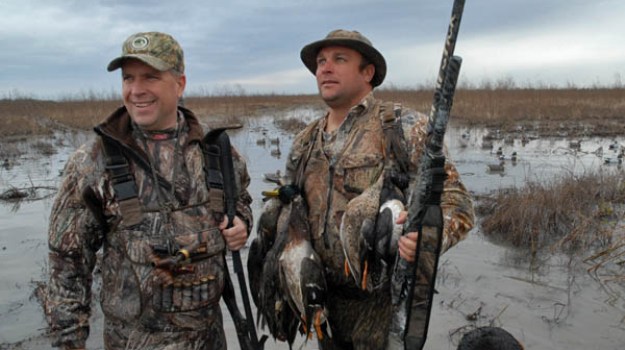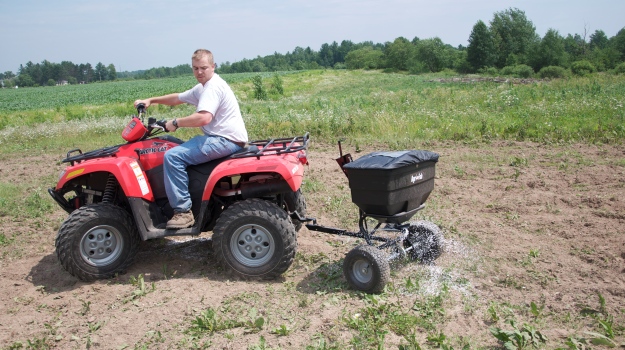
Don't let the Quest for Management Perfection Detract from the Fun of Hunting
By Tony J. Peterson
Last summer I had a conversation with a friend who owns a decent-sized chunk of prime whitetail ground in Iowa. As usual, our back-and-forth centered on deer hunting. Inevitably the conversation turned to current buck sightings and our individual hopes for the upcoming season. He then told me that his farm was overrun with mature bucks that topped out at eight points or less. While sporting good mass, he said, they would end up scoring dismally low and they had the nasty habit of kicking the butts of higher scoring deer. So, he along with his son had a plan to try to knock out a few of these bucks in an effort to provide better breeding opportunities for bucks with better genetics.
This scenario plays out across much of the whitetails’ home range in one way or another, and there’s nothing wrong with it. What sat wrong with me was the apparent disgust in his voice. The general vibe was that it was a letdown, a disappointment, to have to target low-scoring, mature bucks the entire fall. Most of us should be so lucky.
It is a scoring system devised for record-keeping, but the cumulative inches of antlers had crept in and sullied the experience of hunting for him. It has for many of us. I’m not against slapping a tape measure on any of the racks of the bucks I’m fortunate to take. Nor do I hold ill will against the various organizations that support scoring deer - quite the opposite, in fact.
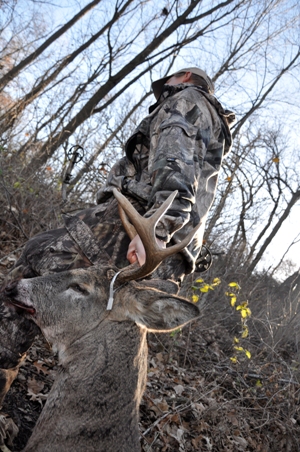 To me, it’s no different than having a much-deserved whiskey soda after a hard day’s hunt while commiserating with your hunting buddies. Nothing wrong with that. But down seven of the drinks and the dichotomy of camp may change to an uglier, sadder state. How we use “score” is no different than so many things in our life. It’s natural and understandable to puff out your chest a little after having arrowed a “Booner,” but it’s unnatural to live and die by the tally of a number at the end of a hunt.
To me, it’s no different than having a much-deserved whiskey soda after a hard day’s hunt while commiserating with your hunting buddies. Nothing wrong with that. But down seven of the drinks and the dichotomy of camp may change to an uglier, sadder state. How we use “score” is no different than so many things in our life. It’s natural and understandable to puff out your chest a little after having arrowed a “Booner,” but it’s unnatural to live and die by the tally of a number at the end of a hunt.
For those of us engaged in deer management, the estimated antler score of live bucks and the actual score of those we take or find dead plays an important role in how we view our herds. Balanced sex ratios, year classes and a litany of other factors play into developing management strategies. The changing dynamics are what make the process so challenging, and at the same time, so rewarding. A healthy herd is the goal, but often that goal takes a back seat to our desire for high-scoring bucks, or at the very least reluctantly “shares the driver’s seat while fighting for control of the vehicle.”
This is a touchy subject, but if you’re stuck with a bit of tunnel vision when it comes to cumulative inches of antler making everything else secondary, it might be time to step back for some much-needed reflection.
A Different Set of Eyes
Throughout my interaction with hunters across the country I notice common threads weaving their way through our conversations. One particularly troubling thread that is becoming more and more prevalent is the hunter who is simply depressed that he or she can’t or didn’t kill a big buck. Their latest season, or several seasons, it seems are simply marred by a lack of mature buck kills.
I like killing big bucks as much as anyone, but when the pursuit of them causes the slow extinction of your hunting enjoyment then it’s not worth it. It’s okay to covet mature deer, but be realistic about it. Even on tightly-managed farms, mature deer aren’t always pushovers, and in many cases even with decent numbers of mature deer, high-scorers might be extremely rare. Prime-age deer, along with those with impressive bone stretching well above their ears, are hard to come by and even harder to kill. Combine that with a myriad of life’s obligations that continually draw you away from the whitetail woods and the odds of consistently connecting on a wall-hanger are definitely not in your favor.
This is something that has crept into my seasons over the years. It used to drag me down and absolutely erode my chance to enjoy a hunt. The panic of having not taken a big buck for the year along with the ticking clock of a season winding down is a one-two punch that can knock you down to the point where you want to hang up the gloves. I know, it’s happened to me, but a few years ago I realized that allowing myself to get to that state was stupid. Hunting deer is my favorite thing to do, and obsessing over one aspect of it at the detriment to the rest of the experience is foolish. This panic also has the nasty habit of perpetuating buck fever, short-circuiting our brains when we should be making sound decisions, and may cost us the one chance at a buck that neatly fits into our personal standards.
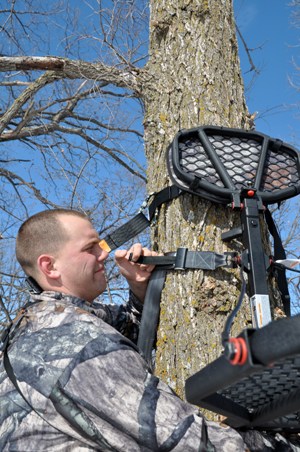 So, I decided that I would branch out and side-step any funk I was likely to fall into. That involved leaving my “main farm” alone and hunting other areas. I made the decision to travel out of state to hunt public land. I liked the idea of hunting public land for the same reason that I occasionally decide that it’s time to set down my compound bow and pick up one of my recurves. Public land and traditional bows come standard with a “handicap,” much like golf, and I enjoy the added leeway that comes with either endeavor. I also decided that if I felt the urge to still-hunt through a bedding area during a rainstorm, I would do that. In other words, I allow myself a change of scenery, of hunting methods, and attitude.
So, I decided that I would branch out and side-step any funk I was likely to fall into. That involved leaving my “main farm” alone and hunting other areas. I made the decision to travel out of state to hunt public land. I liked the idea of hunting public land for the same reason that I occasionally decide that it’s time to set down my compound bow and pick up one of my recurves. Public land and traditional bows come standard with a “handicap,” much like golf, and I enjoy the added leeway that comes with either endeavor. I also decided that if I felt the urge to still-hunt through a bedding area during a rainstorm, I would do that. In other words, I allow myself a change of scenery, of hunting methods, and attitude.
This may seem elementary, but it’s harder to do than you think. The labor of managing a property, building food plots, setting stands and the multitude of other tasks is a major commitment and most of us couldn’t imagine leaving our core property to go hunt public land in our home state or a neighboring state. I’m here to tell you, it might just breathe a little fresh air into your lungs.
This happened to me a few years ago after leaving my home state of Minnesota, while hunting a buddy’s property in north-central Wisconsin. Since I knew I’d get two days to hunt and the likelihood of arrowing a monster buck was not in my favor, I headed to “Packer territory” with the thought that I was simply going to hunt deer. Whatever buck or doe offered me a “can’t-miss” shot was going to be good enough for me.
The first deer to approach was a doe, but she hung up at 75 yards. It didn’t take long for a young eight-pointer to close the distance while the doe browsed along a wood-line. The buck had a destination in mind and when he stopped at 30 yards I settled the pin and let the arrow go. Dragging that buck through the knee-deep water of a cranberry bog was an eye-opener for me. I realized how much fun I was having, just hunting. It was pitch black, late-in-the-night by the time I had wrestled that buck back to my camp, but the feeling was something I had been missing.
Since that hunt, I’ve settled into a pattern of hunting some of my better properties hard, but always taking a few days here or there to hunt a new property or travel somewhere that I can just deer hunt, not trophy hunt. I now truly look forward to my travels to neighboring states to try my hand at public land and whatever will walk by. In fact, I’d take a do-it-yourself trip to Nebraska, one of the Dakotas, or Missouri over a guided hunt to one of the premier states simply because I get to decide what is right for me, and the pressure to kill a big buck is nearly nonexistent.
If travel isn’t an option, I set my sights on a trying to fill a tag in a new manner such as a natural ground blind, spotting and stalking or employing a confidence decoy. It only takes a few days to recharge my batteries. If the entire process of deer hunting has taken a toll on you, consider a day spent chasing something else. Every October I devote a few days to fall turkey hunting. The change is most welcome after two months of hunting western big game and deer, and it usually takes about five minutes to realize how much fun other types of hunting can be.
Don’t Let Fear Win
If the thought of trying to bust up a flock of fall hens and poults or perhaps a morning spent trying to recapture your youth by sneaking up on fox squirrels with your .22 rifle on your deer farm makes you cringe, think about why you have that reaction. I’ve known landowners and deer managers who were nearly neurotic over what was happening to “their” deer throughout the season. The thought that maybe a neighbor would shoot one of “their” bucks was sickening, and they obsessed over how to keep the deer for their own.
I understand that mindset to an extent, especially considering how much work it is build up a property and manage it correctly. However, unless you’re going to erect a nine-foot fence around your acreage, the deer aren’t personal property. It’s counter-productive to think of them in the possessive, and that way of thinking provides a perfect chance for fear to win over.
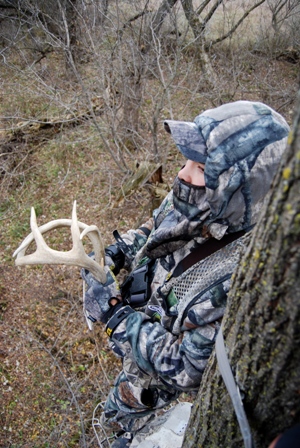 The fear of losing a big buck to someone else, or the fear of messing up a buck’s pattern so that he’s nearly impossible to kill, the fear of watching, for whatever reason, a 180-inch bruiser slip from your grasp can be a driving force, but don’t let it win over the fact that hunting in all of its forms is a time to relax, to reflect. In other words, there’s more to it than witnessing a giant rack bobbing its way through a CRP field toward your stand.
The fear of losing a big buck to someone else, or the fear of messing up a buck’s pattern so that he’s nearly impossible to kill, the fear of watching, for whatever reason, a 180-inch bruiser slip from your grasp can be a driving force, but don’t let it win over the fact that hunting in all of its forms is a time to relax, to reflect. In other words, there’s more to it than witnessing a giant rack bobbing its way through a CRP field toward your stand.
The fear of something negative happening on or around your property when it comes to mature deer is contagious, and has the tendency to pervade others. Consider a newcomer on a highly-managed property and what they would feel if they accidentally shot a button buck. Or the agony of a seasoned veteran watching a beautiful, but lower-scoring buck walk by as the season is drawing to a close. The internal will to make the shot, but the fear of the score being too low, will sully the experience.
Sometimes it’s okay to admit that even though they are awesome creatures, they are still just deer. It may be hard to think about, but there are more important things in life than big bucks. At times I can hardly admit that myself, usually around the end of October or the beginning of November, but it’s true.
Conclusion
If you find yourself in a state of whitetail anhedonia, where your ability to enjoy deer hunting is nonexistent unless there happens to be a dead 170-incher on the ground, it might be time to rethink your approach to the process. Or, if you suddenly realize that you might be losing sight of why you plant food plots, selectively cut or plant trees, hang stands, and dive into the duties of a land manager and devout deer hunter, take a step back.
It’s okay to obsess over the pursuit of deer, but make sure that a healthy portion of that obsession involves the enjoyment of spending time in the woods with family and friends and not the single-minded focus of how many inches of antler you’ll end up possessing at the end of the season. Of course, there is nothing that says you can’t enjoy family hunting time, managing a property to near-perfection, have a blast trying out an alternative hunting method, or even starting fresh on a property owned by Uncle Sam for a few days and still have the chance to tag out on a bruiser. It’s all possible, it’s all fun, and in my opinion, the entirety of it all is what we should all enter the woods to achieve.
Sometimes that can be easy to lose sight of.
















